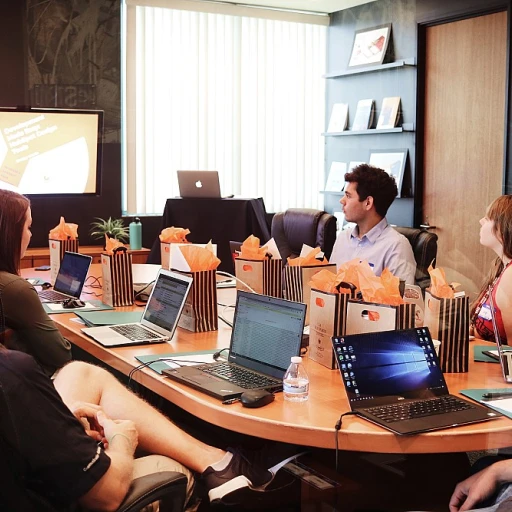
Understanding Situational Leadership
Decoding Situational Leadership
The concept of situational leadership is rooted in the understanding that there is no singular best leadership style for every situation. Instead, effective leaders must adapt their approach based on the context and needs of their team members and tasks. This flexible leadership model emphasizes that leaders should vary their management style depending on the readiness and performance levels of their employees. At its core, situational leadership involves adapting one's style to the performance readiness of a team member. This readiness is a reflection of an individual's ability and willingness to take on a task. As team members' skills and confidence evolve, situational leaders adjust their approach to provide the appropriate level of support and direction. A vital component of the situational leadership model is recognizing the dichotomy between directive and supportive behaviors. Directive behavior involves providing clear instructions and guidance, while supportive behavior focuses on listening, facilitating, and encouraging. The task for leaders is to balance these behaviors to enhance both employee performance and job satisfaction. Employing this adaptive leadership approach allows leaders to effectively respond to dynamic business environments, which is crucial for boosting team performance and achieving organizational objectives. Understanding these nuances is essential for those seeking to improve their leadership skills and contribute positively to their company's success. For those interested in further exploring how situational leadership can enhance their leadership journey, consider reading more about unlocking the potential of adaptive leadership training.Historical Context and Evolution
Navigating Leadership Through Time
The concept of situational leadership finds its roots in the dynamic nature of the workplace, aiming to create a seamless alignment between leadership strategies and the ever-evolving needs of both the organization and its employees. The world of leadership saw significant shifts over time, but situational leadership stood the test of circumstances, highlighting its relevance through diverse historical contexts. Originally, leadership studies embraced a one-size-fits-all approach, where a fixed style dominated organizational hierarchies. However, as businesses evolved, so did the realization that a single leadership model was not sustainable for varied work environments. This led to the understanding that no two teams or tasks are alike, stressing the need for leaders to adapt their style to elevate performance and achieve organizational goals. Research from leading management institutions provided insight into the effectiveness of adaptable styles. This shaped situational leadership as one of the most influential leadership theories, advocating for leaders to cater their approach to the inherent needs of their team members. The result? Improved employee performance, heightened job satisfaction, and the development of leadership skills tailored to specific situations. Moreover, the evolving workplaces demanded a shift from autocratic leadership to styles that consider members' readiness and commitment. Situational leaders emerged, equipped to match their strategy to their team’s performance readiness levels. Today's leadership development programs integrate these dynamics into their training, encouraging managers to become adept at this situational approach. The evolution and historical context of situational leadership affirm its timeless value in leadership management. Exploring the adapting your approach to match the needs of your team underlines this model's enduring relevance, teaching current and future leaders to effectively manage the complexity of modern work scenarios.Modern Applications in Leadership
The Enduring Impact in Today's Context
While situational leadership has its roots firmly planted in collaborative workplace history, its relevance today remains significant. The model is celebrated for its flexibility, enabling leaders to adapt their leadership style depending on a team member's maturity level and the specific demands of a task. This adaptability proves especially valuable in modern, dynamic workplaces where both "team" and "task" can vary significantly from one project to the next.
Modern day leaders face multifaceted challenges, including managing remote teams and navigating unpredictable markets. A situational approach permits leaders to customize their management strategies. They can shift between direct control and supportive mentoring according to the unique performance readiness of their employees. This personal touch helps in elevating both individual and collective performance.
Businesses employing situational leadership often report increased job satisfaction among team members because their professional growth is aligned with their current capabilities and aspirations. This approach not only boosts productivity but also fosters trust within teams. In essence, situational leaders cultivate environments where members feel valued and understood.
Situational leadership is also invaluable when integrating new team members or restructuring management roles within a business. Newcomers often need more guidance, whereas seasoned employees may require more autonomy. By appropriately matching the leadership style with the readiness level of the employee, organizations witness overall improvements in both morale and results.
Ultimately, while situational leadership demands a keen understanding of team dynamics and individual member skills, it serves as a robust response to the complexities of modern businesses. For further insights into the nuances of adapting leadership styles in real-time scenarios, consider exploring situational leadership within cultural perspectives. The exploration reveals how cultural influences can further enhance the sophistication of situational models and their application in diverse environments.
Case Studies: Success Stories
Notable Examples of Situational Leadership in Action
Across various sectors, the situational leadership model has proven instrumental in driving team success and enhancing organizational performance. Through real-world examples, it becomes clear how adapting one’s leadership style to the specifics of a situation can lead to improved outcomes.
In the fast-paced environment of the technology sector, leaders have effectively employed situational leadership to manage dynamic project teams. By assessing each team member’s level of performance readiness, managers can delegate tasks more effectively, considering each individual's skill level and willingness to tackle the job at hand. This approach not only boosts task completion but also fosters a sense of job satisfaction among team members, as they feel their personal growth and capabilities are being recognized.
Another commendable application of the situational leadership approach can be seen in retail management, where leaders must constantly adjust to the evolving needs of their store teams. In this context, situational leaders recognize the importance of tailoring their management style to suit the varying sales experiences and customer interactions. By shifting between coaching and supporting roles, they ensure that employees remain motivated and aligned with the company's goals, ultimately driving better business results.
In educational institutions, effective situational leaders adapt their practices according to the teaching experiences and professional development needs of their staff. These leaders take into account the varying levels of experience across faculty members, offering support to new teachers while granting more autonomy to veteran educators. This strategic flexibility enhances the overall teaching environment and student outcomes.
These success stories demonstrate the potential of situational leadership to yield transformative results in diverse settings. By acknowledging the critical factors of each unique situation and opting for the most appropriate leadership style, leaders can navigate complex challenges and drive expansive growth within their teams and organizations. The adaptability championed by this leadership model enables leaders to meet the ever-changing demands of the contemporary workplace and paves the way for successful leadership development.
Challenges and Criticisms
Addressing the Challenges of Situational Leadership
Situational leadership, while an influential and pragmatic approach, is not without its limitations and challenges. Understanding these can empower leaders to navigate potential roadblocks effectively.- Complexity in Application: One of the main challenges is the ability to accurately assess the performance readiness of team members. This involves a nuanced understanding of their skills and willingness to tackle tasks, and requires leaders to be highly perceptive, as misjudgments can lead to ineffective leadership styles being applied.
- Consistency vs. Adaptability: Balancing consistency and adaptability poses another challenge. As situational leaders adapt their style to match team dynamics and tasks, there can be a perception of inconsistency, potentially leading to confusion or uncertainty among employees. Ensuring clear communication about leadership intentions and expectations is essential to mitigate this.
- Training and Development Needs: To develop the skills necessary for effective situational leadership, organizations often need to invest in comprehensive leadership training. This may include learning to identify employee developmental levels and understanding various leadership styles, which can be resource-intensive.
- Resistance to Change: Some team members might be resistant to leadership changes, especially if accustomed to a particular style. Thus, transitioning to a situational approach requires sensitivity to employees' comfort levels and readiness.
Future Trends and Implications
Looking Ahead: Evolving the Situational Leadership Model
The evolving landscape of leadership and work dynamics suggests several implications for the future of the situational leadership model. As businesses and teams grow more diverse in their compositions and functions, leaders previously aligning strictly with one leadership style may find a situational approach more vital than ever. Business needs change frequently, and with them, the expectations and tasks assigned to team members. Emerging trends in leadership development highlight key areas for forward-thinking leaders:- Advanced Technologies: As technology continues to influence business operations, leaders must adapt by using data analytics and AI to tailor their situational leadership approach for enhancing employee performance and engagement.
- Remote and Hybrid Work Models: Situational leaders will likely face unique challenges in assessing performance readiness and team dynamics when physical presence is less frequent. Adjusting their management style to fit these settings will require creativity and an expansive understanding of each team members' needs.
- Cultural Intelligence: With globalization, leaders must develop skills that allow them to navigate multi-cultural work environments more effectively. Situational leadership will encourage leaders to be more culturally sensitive and adaptable, tailoring their approach to accommodate diverse employee backgrounds.
- Continuous Leadership Training: Emphasizing continuous leadership development will be crucial for ensuring leaders remain effective in varying situations. Training programs focusing on situational leadership and its modern applications can cultivate future leaders who are versatile and resilient.
- Sustainability and Ethical Practices: Teams are increasingly focused on sustainable business practices. Leaders using situational leadership to promote these values can foster environments where employees feel aligned with the business's ethical mission.












